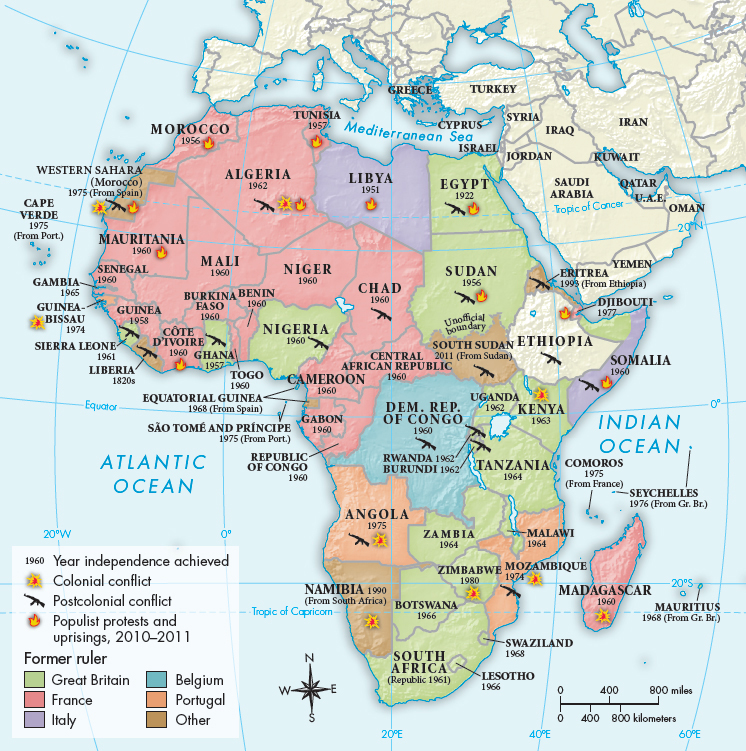Understanding World Societies:
Printed Page 971
The Growth of African Nationalism
African nationalism resembled similar movements in Asia and the Middle East in its reaction against European colonialism, but there were two important differences. First, because the imperial system and Western education did not solidify in Africa until after 1900 (see “Colonialism’s Impact After 1900” in Chapter 25), national movements came of age in the 1920s and reached maturity after 1945. Second, Africa’s multiplicity of ethnic groups, coupled with colonial boundaries that often bore no resemblance to existing ethnic geography, greatly complicated the development of political — as distinct from cultural — nationalism. Was a modern national state based on ethnic or clan loyalties? Was it to be a continent-
The first nationalist impetus came from the United States and the Caribbean. The most renowned participant in this “black nationalism” was W. E. B. Du Bois (1868–
In the 1920s a surge of anticolonial nationalism swept educated Africans in French and British colonies. African intellectuals in Europe formulated and articulated négritude, or blackness: racial pride, self-
The mass protests that accompanied the deprivations of the Great Depression, in particular the cocoa holdups of 1930–
The repercussions of the Second World War in Africa greatly accelerated the changes begun in the 1930s. Many African soldiers who served in India had been powerfully impressed by Indian nationalism. As African mines and plantations strained to meet wartime demands, towns mushroomed into cities, which became centers of discontent and hardship.
Western imperialism also changed. The principle of self-
Postwar African nationalists pragmatically accepted prevailing colonial boundaries to avoid border disputes and achieve freedom as soon as possible. Sensing a loss of power, traditional rulers sometimes became the new leaders’ worst political enemies. Skillfully, the new leaders channeled postwar hope and discontent into support for mass political organizations that offset this traditional authority. These organizations staged gigantic protests and became political parties.

ANALYZING THE MAP: How many African states achieved independence after 1945? How many experienced some sort of postcolonial conflict?CONNECTIONS: How did the imperialist legacy serve to complicate the transition to stable, independent nations in Africa and Latin America?